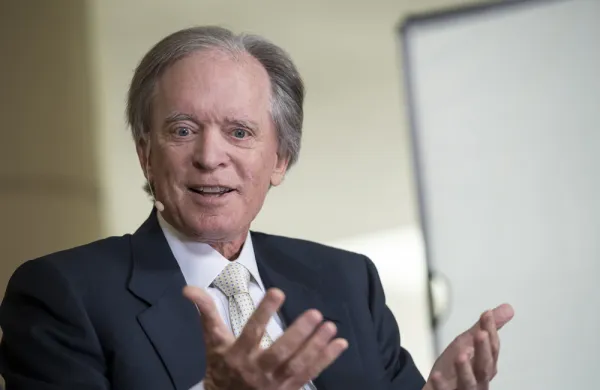Today’s bond investors are planning the great escape from beta. Given the likelihood that tighter monetary policy will push up yields, there’s little appeal in trying to replicate the performance of the market as a whole.
Many institutional investors think absolute-return bond funds — which have already grown in popularity since 2009, impelled by a sense that the fixed-income bull market must end sooner or later — might be their way out. As a result, some of those vehicles have seen strong interest over the past couple of years. Fifty-nine absolute-return fixed-income funds have launched in Europe since 2009, according to Chicago-based research firm Morningstar, with peaks of 15 that year and 12 in 2014.
One of them is the BNY Mellon Absolute Return Bond Fund. Net inflows to the €1.73 billion ($1.93 billion) fund were only €381 million between its May 2012 launch and the end of 2013, but they surged to €755 million last year. Inflows year-to-date through early September totaled more than €500 million.
But absolute-return bond funds can have a tough time achieving the returns they promise. Some managers say hitting the mark could get even harder as central banks raise interest rates, decisions that will reduce the value of portfolios with net long positions. Managers think it’s fairest to judge their funds over the length of an entire market cycle, though critics might argue that they’re meant to provide an absolute return regardless of what the market is doing.
“Our target is 4 to 5 percent gross above three-month Libor,” says Mark Kiesel, portfolio manager of the $814 million Credit Absolute Return Fund at Pacific Investment Management Co. and the Newport Beach, California–based bond giant’s chief investment officer of global credit. “In a rising rate environment, that’s going to be challenging,” admits Kiesel, whose firm manages more than $30 billion in absolute-return fixed-income strategies. However, he predicts that interest rates will climb slowly, allowing the fund to meet its target over a three- to five-year horizon.
The problem for PIMCO’s Credit Absolute Return Fund is its net-long position in the fixed-income market: Higher rates will hit the capital value of the bonds in its portfolio. In response to the prospect of a rate hike by the Federal Reserve, Kiesel and his team have boosted its short positions.
As the fund seeks to make returns in the coming years — and to retain institutional investors’ trust as new absolute-return rivals enter the market — Kiesel says $1.52 trillion PIMCO’s huge size helps. The firm has 61 analysts worldwide who play a key role in selecting individual corporate bonds and emerging-markets sovereign and corporate debt, which together account for a large proportion of the fund’s portfolio.
“A lot of alpha can come from global bottom-up analysis,” Kiesel says. “Investing in good corporate credit can produce positive returns even when rates are rising, because spread tightening can offset this.”
Since its inception in 2011, Credit Absolute Return has posted an average annual return of 4.1 percent gross of fees, just missing its target after allowing for Libor rates.
At Standard Life Investments, the £750 million ($1.153 billion) Absolute Return Global Bond Strategies Fund has also been slightly off-target since the Edinburgh, Scotland–based asset manager launched it in 2011. The fund’s annual return has averaged 2.4 percent above three-month Libor, below the current goal of 3 percent. But co–portfolio manager Roger Sadewsky, £250 billion Standard Life’s investment director for multiasset investing, points out that until 2013 the target was only 2.5 percent.
Sadewsky also highlights the fund’s low volatility: Over the past three years, it has averaged 1.9 percent. Even in the third quarter of 2011, when the new offering found itself in the middle of the euro zone debt crisis, it was up 10 basis points.
The Absolute Return Global Bond Strategies Fund includes 20 to 30 strategies designed to enable it to earn a return in very different market environments. “We have some exposure to European high-yield bonds, but a nice diversifier for that is our strategy that shorts the Korean won against the U.S. dollar,” Sadewsky says. He anticipates that both positions will yield positive returns over the long haul. In the short term, Sadewsky also expects them to diversify risk because fears about global growth on any given day are likely to hit high-yield bonds and the won, producing losses for one strategy and gains for the other.
Still, old hands regard the funds set up since the credit crisis as untested newcomers. April LaRusse, a senior fixed-income product specialist at £382 billion Insight Investment, a London-based arm of Bank of New York Mellon Corp., which manages $18.8 billion in absolute-return bond strategies, recalls 2008, when many such funds closed after they were forced to sell holdings at fire-sale prices.
Insight’s Bonds Plus strategy, on which the BNY Mellon Absolute Return Bond Fund is based, lost only 0.44 percent that year. “We held out till the markets calmed down and then increased risk, because everything was priced as if it was going to default,” LaRusse says.






